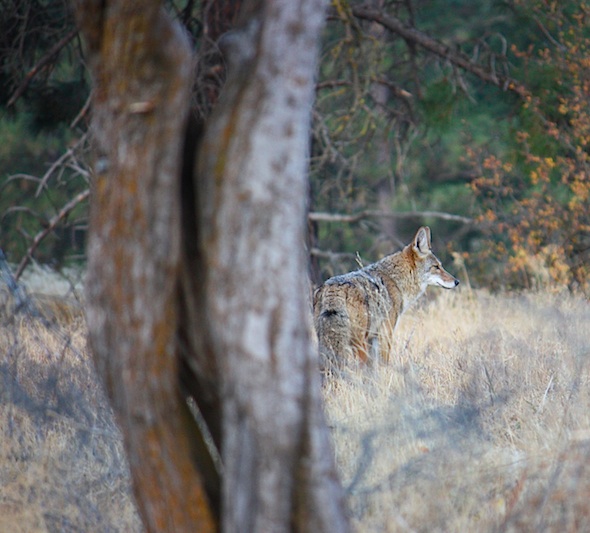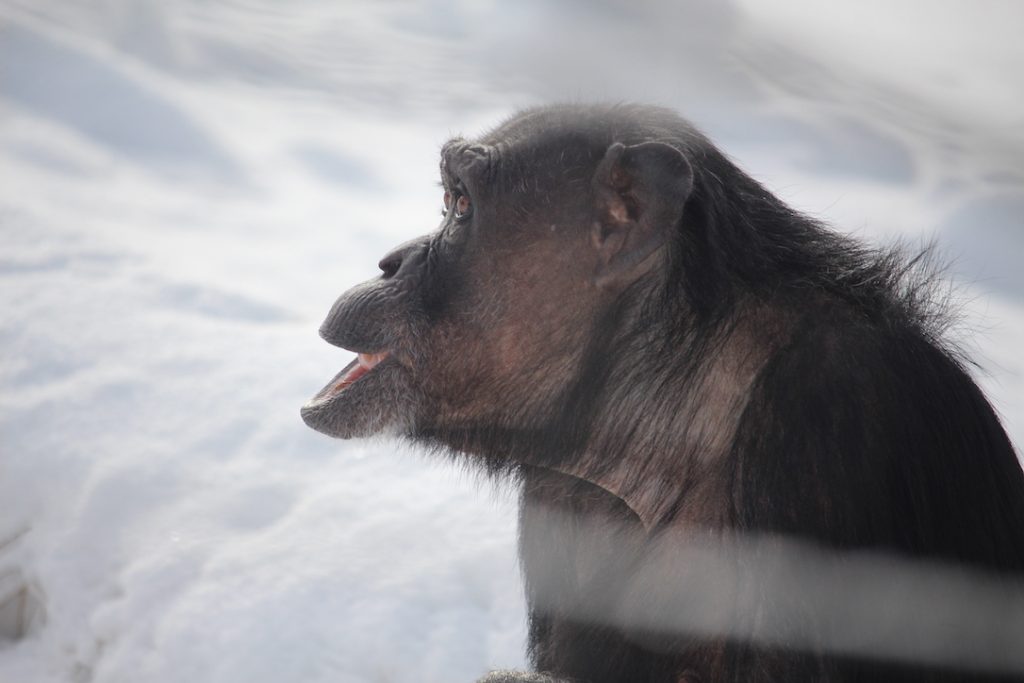Earlier this week, I listened to an interview with author Dacher Kaltner about his book Awe: The New Science of Everyday Wonder and How it Can Transform Your Life. I haven’t read the book yet (it’s on my list now!), but I keep thinking about the premise, as I will try to clumsily paraphrase: the key to happiness is experiences that give you a sense of awe.
As it relates to the sanctuary, it brings up three things for me. The first is just the fact of being around and getting to know members of another species, a species that is so relatable and yet mysterious at the same time. Just to be in their presence for a few minutes can be awe-inspiring.
I admit that there are times when I forget how incredible an unique this experience is. And I often think about how the chimpanzees shouldn’t have been put in a situation where this was possible for me at all. But they were, and I’m one of a small number of people who get to spend my days taking care of them and trying to work towards a future when chimpanzees are no longer in any captive environment. Dreaming of that day, when chimpanzees are only found free in their native land, evokes a different and even deeper sense of awe.
The second element of the sanctuary + awe that was brought up for me is the land and natural surroundings where the sanctuary sits. As I wrote on our About Us page, the sanctuary is located on the traditional land of the Kittitas band of the Yakama Tribe. The native Kittitas people referred to what we now call the Cle Elum River near the sanctuary as Tle-el-Lum, meaning Swift Water. I imagine the members of this tribe had a reverential respect for the river and the life that it carried and nourished.
J.B. and I have lived on the sanctuary property for about fourteen years now, and the last several, since the sanctuary has acquired more land, have been without any human neighbors within sight. Our couch faces large windows that look out into the orchard and the pine trees beyond the orchard that stand tall on the hill overlooking the river. It’s an awesome view that never gets old.
When we walk out the door, we are always greeted by the sounds of stellar jays or eagles or other birds (this time of year its the busy twittering of juncos, in a few months it will be the longer calls of red wing blackbirds). The deer pass through the property regularly, the marmots and ground squirrels always show up in the spring, and every once in a while we see elk, bobcats, coyotes or wild turkeys.
The third element of the sanctuary + awe that I keep thinking about is the experiences of awe that chimpanzees might have. There have been a few studies in the wild that have approached this question, including some speculation about the possibility of “sacred trees.”
I don’t think we could definitively say what any chimpanzee is experiencing, but once in a while we catch the chimpanzees at the sanctuary in moments that just might be awe.
Here’s to more awe for everyone in 2023.





















